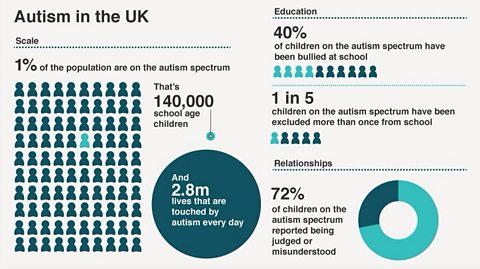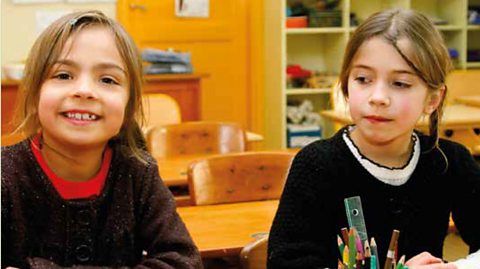
What is autism?
We have two children on the autistic spectrum, which is a lifelong, developmental disability that affects how a person communicates with and relates to other people, and how they experience the world around them.
The autism diagnosis is set on a spectrum therefore it could be said that if you have met one person with autism, you’ve simply met one person with autism. Every person is different. It’s also important to remember that autism isn’t who a person is, they still have their own innate nature and character.
When you meet a child with autism, it may be obvious to you that they are different somehow - but equally, there may be absolutely no obvious sign of difference. Children and young people with autism are living around us all the time and we may not be aware of their condition. In fact, some people may even have autism and not realise this is the thing they have been struggling with.

Autism facts

Socialising and interacting
Young people on the autistic spectrum live in a world that is difficult for others to understand, and one which has difficulty understanding their needs. They can have problems with social communication and interaction, which may result in low self-esteem and confidence. Socialising in groups can be difficult, so time away from school is often spent alone.
Some groups organise social activities for autistic teenagers. Teenagers from Kaimes Special School Association in Edinburgh enjoy a couple of hours on a dry ski slope every Friday.
Click the image below to get to know four of the children.

The difference between boys and girls
Diagnosis
According to the National Autistic Society, by age 11 just one-fifth of girls with Asperger syndrome or high-functioning autism have been correctly diagnosed, compared with half of boys.
Females were also more likely to be misdiagnosed, with 42% of them being diagnosed with another condition, compared with 30% of males.
Once diagnosed, half (49%) of females with Asperger syndrome or high-functioning autism said the diagnosis made no difference to the support they received. This compares to 39% of males. The NAS survey suggests some quite clear challenges for women and girls with autism, particularly around getting their needs identified.
Research also shows that there are higher levels of misdiagnosis, delayed diagnosis, difficulty in accessing diagnosis and lack of diagnosis for girls and their families.
Symptoms
So how do girls present differently to boys? This is a generalisation, but many girls appear to be better at masking their symptoms. For instance, they may more ably learn the social skills, cues, the scripts of conversations, facial expressions and eye contact required to fit in with the world around them.
Of course, in one way this is an advantage, but in another they can easily slip under the radar- not quite fitting in, their needs unmet, their anxiety levels rising to critical. This “not fitting in” and anxiety can lead to school refusal, exclusion, victimisation, self-harm, eating disorders and depression and suicidal thoughts. This in turn leads to these young women accessing non-autism services that may not have the knowledge or skills to address the underlying issue.

Eddie's Day
Eddie, aged 17, is on the autistic spectrum and attends Circus Eruption. Click on the image below to find out how Eddie experiences a day.
Learn more about this topic:
Can dyslexia inspire me to success? document
People with dyslexia have excelled in all walks of life, from treading the boards to theoretical physics.

Have I reached my peak intelligence? document
Have you reached your peak intelligence? Can you learn no more? Has your brain processed all it can?

How were you made in the womb? document
Scrub backwards and forwards through this animation to see the incredible events that made you inside the womb.
